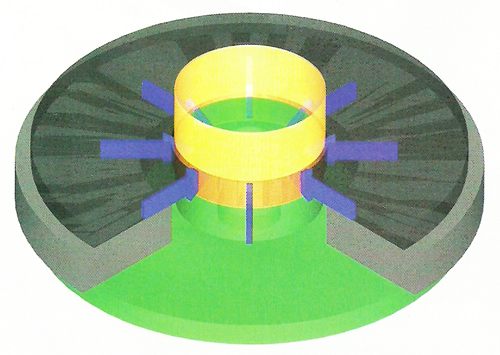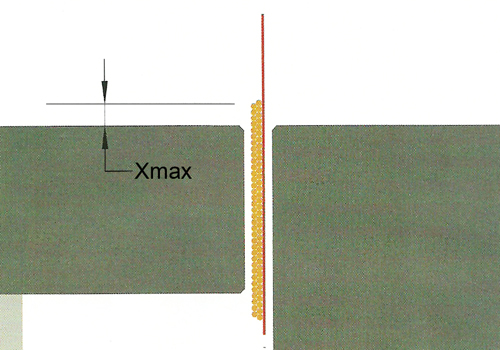What makes a moving-coil loudspeaker tick? What are some of the major variations in loudspeaker motors?
As I discussed here, a wire carrying an electric current in a magnetic field will experience a force. The maximum force for a given current and magnetic field will occur when the current is flowing perpendicular to the magnetic field.
In a moving coil loudspeaker, a coil of wire is immersed in an air gap in a magnetic circuit. The magnetic field is “radially” oriented, meaning that its direction is across the gap in the radial direction.
As you can see in Figure 1, this means the current is perpendicular to the magnetic field (blue arrows) in the gap.

The force is also proportional to the magnetic field strength, the current, and the length of wire in the gap. For a given magnet, the wider the air gap the lower the magnetic field strength in the gap.
Narrow gaps thus yield the strongest field, but the coil has to fit in the gap with some reasonable clearance to prevent it from rubbing against the side of the gap when moving.
For a given wire size, the longer the length of wire in the gap, the thicker the coil and the greater its resistance, thus reducing the current. Using thicker wire will reduce resistance, but increases coil thickness and mass, requiring a wider gap, and lowering the magnetic field strength.
The majority of woofers used in professional sound applications use coils with winding lengths longer than the thickness of the air gap. This keeps the gap full of coil turns as it moves in and out, provided that the coil never moves so far that the ends of the coil enter the gap.
If that happens, the number of wire turns in the gap begins to decrease, also decreasing the length of wire in the gap, and reducing the driving force.
Roughly speaking, the distance the coil travels before the end of the coil enters the gap is called the Xmax (Figure 2).

What about the magnet circuit? How is it made and what are the tradeoffs? Some of the earliest moving coil loudspeakers used a field coil to create the magnetic field. This was basically an electromagnet made from a large coil of wire wrapped around the pole piece and carrying a DC current.
Sometimes the field coil was used as a large choke to smooth the DC voltage of the amplifier. In the 1930s a new magnetic material called Alnico (made from Aluminum, Nickel, and Cobalt) was invented and soon became the popular choice for providing the static magnetic field.
Alnico provided a good energy/weight ratio, but a civil war in Zaire in 1978 closed down the only commercial source of cobalt in the world. As a result, ferrite magnets quickly replaced Alnico in most applications.
Ferrite magnets are a ceramic material made of iron and either barium or strontium oxides. They are relatively inexpensive, but have a fairly low energy/weight ratio meaning a speaker with a ferrite magnet will typically be heavier than one with an alnico magnet of the same strength.
Very strong, lightweight magnets made of neodymium, iron, boron, and small amounts of several other elements were first patented by Sumitomo, General Motors, and the Chinese Academy of Sciences in 1983.
Neo magnets are “scary strong” for their weight, but the earliest forms of neo magnets lost their magnetism at temperatures low enough to be a problem for high-powered loudspeakers. More patents followed in later years covering improvements to neo magnets to increase their strength and resistance to high temperatures. Due to these improvements and their high energy/weight ratio, neo became a more popular magnet choice for speakers around 2000.
Neo speakers are still quite popular, of course, but rising prices for neodymium and other components of neo magnets have recently caused considerable concern and will continue to result in increased prices for neo speakers until other rare earth mines resume or commence operations in the next few years.
Samarium cobalt magnets are also very strong and expensive, although not as strong as neodymium, and can operate without damage at very high temperatures.














